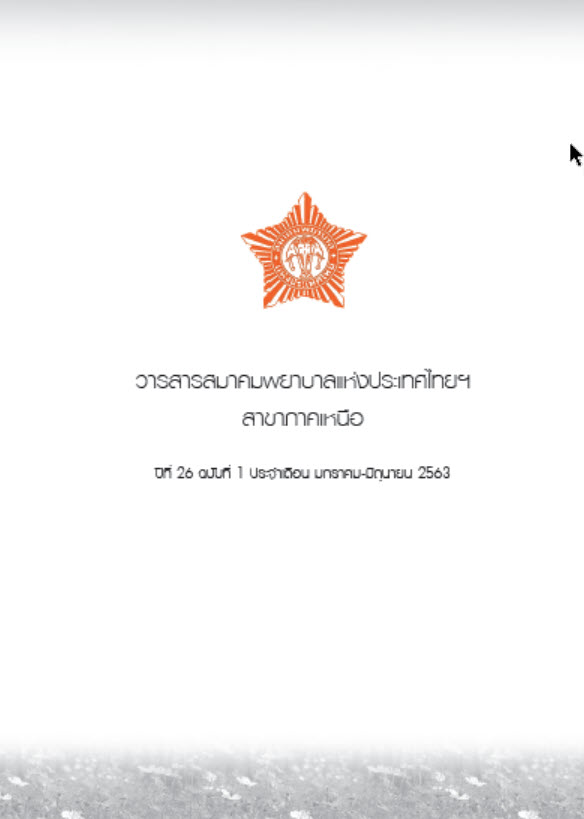Teaching and Learning in Nursing by High-Fidelity Patient Simulation
Keywords:
High-Fidelity Patient Simulation, Teaching and Learning in nursing, SimulationAbstract
Teaching and Learning in nursing education for Nursing Student by High-Fidelity patient simulation(HFPS) is an experiencing-learning pedagogy of educators assisting nursing students to achieve expected outcomes. Participation in learning bridges theory and practice through Simulation setting. High-Fidelity Patient Simulation leads learners to states of analytical education which includes: Simulation design, Outcomes and Objectives, Facilitation, Debriefing, and Participant Evaluation. Teaching is divided into three phases; 1) Pre-briefing phase 2) Simulation phase and 3) Debriefing phase. The High-Fidelity patient simulation has been found to have many advantages for Nursing Students. The model develops students’ skill of clinical judgment, critical thinking, problem solving, psychomotor skills, and clinical reasoning. This article’s objective is to guiding development of future teaching-learning in nursing education that prompts students’ skills and confident in the real situation.
References
Panich, V. Way of Learning for students in 21st century. Bangkok: Sarit Wong-Sodsri foundation. 2012. (in Thai)
Kunaviktikul, W. Teaching and learning in the discipline of nursing in the 21st century. Nursing Journal. 2015; 42(2): 152-156. (in Thai)
Ministry of Education. The announcement of ministry of education for qualification framework of bachelor of nursing science in 2017. 2018; 1-11. (in Thai)
Jeffries, P. A framework for designing, implementation, and evaluating simulations used as teaching strategies in nursing. Nursing education perspectives. 2005; 26(2): 96-103.
Thatan, T. and Srijanpal, W. Teaching method using simulation-based learning. Journal of Nurses’ Association of Thailand Northern Office. 2017; 23(1): 1-10. (in Thai)
Norkaeo, D. Simulation based learning for nursing education. Journal of Boromarajonani College of Nursing, Bangkok. 2015; 31(3): 112-122. (in Thai)
Langkarpint, P. The use of High-Fidelity patient simulation on teaching and learning for nursing students. Journal of Nurses’ Association of Thailand Northern Office. 2016; 22: 8-16. (in Thai)
Kim, J., Park, J-H., & Shin, S. Effectiveness if simulation-based nursing education depending on fidelity: a meta-analysis. BMC medical education. 2016; 16: 1-8.
Sinthuchai, S., Ubolwan, K., and Boonsin, S. Effect of High-Fidelity simulation-based learning on knowledge, satisfaction, and self-confidence among the fourthyear nursing students in comprehensive nursing care practicum. Rama Nurs J. 2017; 23(1): 113-127. (in Thai)
Doolen, J., Mariani, B., Atz, T., Horsley, T. H., Rourke, J. O., Mcafee, K. & Cross, C. L. High-fidelity simulation in undergraduate nursing education: a review of simulation reviews. Clinical simulation in nursing. 2016; 12(7): 290-302.
Welman, A.-M. and Spies, C. High fidelity simulation in nursing education: Considerations for meaningful learning. Trends in Nursing. 2016; 3(1): 1-16.
INACSL Standards Committee. INACSL Standards of best practice: Simulationsm. Clinical Simulation Nursing. 2016; 12(S): S48-S50.
INACSL Standards Committee. INACSL Standards of best practice: Simulationsm simulation design. Clinical Simulation Nursing. 2016; 12(S): S5-S12.
INACSL Standards Committee. INACSL Standards of best practice: Simulationsm Outcomes and objectives. Clinical Simulation in Nursing. 2016; 12(S): S13-S15.
INACSL Standards Committee. INACSL Standards of best practice: Simulationsm Facilitation. Clinical Simulation in Nursing. 2016; 12(S): S16-S20.
Thanaroj, S. Simulation-based learning in principles and techniques course in nursing practicum. Boromarajonani college of nursing, Uttaradit journal. 2017; 9(2): 70-84. (in Thai)
INACSL Standards Committee. INACSL Standards of best practice: Simulationsm Debriefing. Clinical Simulation in Nursing. 2016; 12(S): S21-S25.
INACSL Standards Committee. INACSL Standards of best practice: Simulationsm Participant Evaluation. Clinical Simulation in Nursing. 2016; 12(S): S26-S29.
Miller GE. The assessment of clinical skills/competence/performance. Acad Med. 1990; 65(9 Suppl): S63- S67.
Lee J., Lee Y., Lee S., & Bae J. Effects of high-fidelity patient simulation led clinical reasoning course: Focused on nursing core competencies, problem solving, and academic self-efficacy. Japan Journal of Nursing Science. 2016; 13: 20-28.
Downloads
Published
How to Cite
Issue
Section
License
บทความที่ได้รับการตีพิมพ์เป็นลิขสิทธิ์ของสมาคมพยาบาลแห่งประเทศไทยฯ สาขาภาคเหนือ
เนื้อหาและข้อคิดเห็นใดๆ ที่ตีพิมพ์ในวารสารสมาคมพยาบาลฯ ถือเป็นความรับผิดชอบของผู้เขียนเท่านั้น ผู้เขียนบทความต้องศึกษารายละเอียดหลักเกณฑ์การจัดทำต้นฉบับตามที่วารสารกำหนด และเนื้อหาส่วนภาษาอังกฤษต้องได้รับการตรวจสอบจากเจ้าของภาษามาแล้ว


